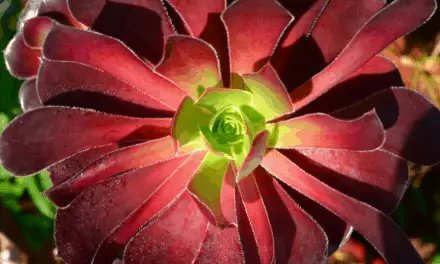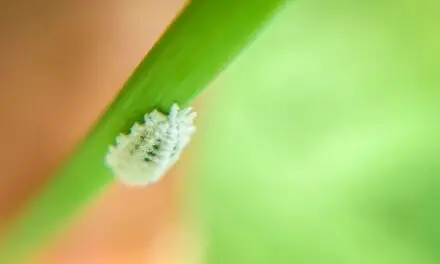You’ve had this gorgeous succulent for a while now.
At first, its leaves were plump, firm, and didn’t bend.
But you’re starting to notice it’s becoming rubbery.
Most succulents are rubbery in nature but if the leaves remain firm and plump, it’s probably not anything to worry about.
But if they’re limp, juicy, or becoming wrinkled it may be a sign that your succulent is not getting the care it needs.
Table of Contents
Why Is My Succulent Rubbery?

Rubbery leaves are one of the first signs that your succulent is not getting enough water.
And if the situation continues, the rubbery leaves will begin to wrinkle and shrivel up.
At this point, the plant can be brought back to good health simply by watering it.
But, if the lack of water continues, the plant will eventually dry out and die.
Related Article: Why Is My Green Succulent Turning Red?
How To Identify Watering Problems With Your Succulent
If your succulent’s leaves feel mushy and juicy, then it has been overwatered.
If the leaves feel rubbery, limp, shriveled, or wrinkled, then it has been underwatered.
Because they are drought-resistant plants, overwatering is more of a problem for succulents because of how well they store the water you give them.
If you have any doubts about watering your succulent, remember that less is more and it’s a lot safer for your plant to underwater than it is to overwater it.
Another sign of watering problems is the presence of discoloration.
Overwatered succulents will often look red or yellow.
Underwatered succulent leaves will bend and have a definite feel of rubberiness.
What To Do If Your Succulent Has Been Overwatered
For overwatered indoor succulents, ensure they get plenty of air circulation and put a paper towel between the pot and its drainage dish for a day or two.
Stop watering your plant immediately and don’t give it more water until the soil has completely dried out.
If you’re keeping your succulent outdoors, you may have to move the plant in if it’s getting too much water from rainfall.
If the area in which you live gets a lot of rainfall in winter, you may need to bring your succulent indoors where you can care for it properly before it gets too wet and cold out.
But succulents do not like sudden and extreme changes to their environments, so bring your plant in before winter arrives so the changes in temperature will not be too extreme and shocking for your plant.
Related Article: Why Is My Succulent Uprooting?
What To Do If Your Succulent Has Been Underwatered
Underwatering problems are much easier to cure than overwatering ones.
Start by watering the base dish and wait until all the water absorbs.
Do this several times until water seeps through the drainage holes on the bottom of the pot.
Wait a couple of days to ensure all the water drains completely.
If the leaves are still rubbery, limp, or wrinkled, do the process over again until they become firm and plump.
Once the plant looks like it’s getting back to its beautiful, normal self, then begin your watering schedule again.
Your succulent will need watering roughly every 2 to 4 weeks but do some research on the particular succulent you own so you can water it as to its specific needs.
Other Factors That Can Affect Your Succulent’s Health
In the case that it’s not a watering issue and you know that your plant is getting the water it needs, there are other things you can check.
Airflow
Air can be a problem that contributes to rubberiness.
If you have a succulent indoors and in a great sunny spot, but there’s not enough airflow, this can cause “choking.”
Either open a window or get a small, oscillating fan to encourage the air to create a gentle breeze through the area.
Sunlight And Temperature
The amount of sunlight your succulent requires will vary depending on the type of plant it is, but most succulents require at least four to six hours a day.
If it’s not getting enough light, it can cause the plant to develop a rubbery feel.
Also, almost all succulents are most happy in a dry, arid climate.
So, if you live in an area where winter is wet and below freezing, make sure it stays warm and dry during the colder months.
It’s important to save your succulents from exposure to drafts and frost.
Soil And Roots
All succulents need fast-draining soil.
If you keep your succulent in a pot, ensure there’s plenty of drainage holes at the bottom.
Root Rot And Fungus
If the soil feels right and your plant is showing signs of rubberiness, then inspect the roots for root rot or some other fungal disease.
Either be gentle in removing the plant from its pot or carefully uproot.
If the roots look like rot or fungus has really taken hold, there may not be much hope for your plant.
If there are only a few ill-looking roots, then snip away the bad parts and repot in a clean container with fresh soil.
Humidity
For more humid climates, you may notice little white tendrils coming out of the soil.
These are aerial roots looking for water from the air.
When this happens, don’t worry, your plant is taking care of itself.
But you may want to increase airflow to help it cope better with the moist environment.
Should You Mist Your Succulent?
It’s okay to mist young succulents but once they reach full maturity they usually don’t like to be misted.
These drought-resistant plants thrive in dry climates, so when you spray mist at them, you change humidity levels around the plant and this excessive moisture can lead to rot.
Final Thoughts
Whether your succulent is chubby or spiky, has rosettes or baby plants hanging off the leaves, giving it the right amount of water is crucial.
Ensure the soil drains well and there’s enough airflow and sunlight.
Proper care will keep the succulent with you for years to come.




